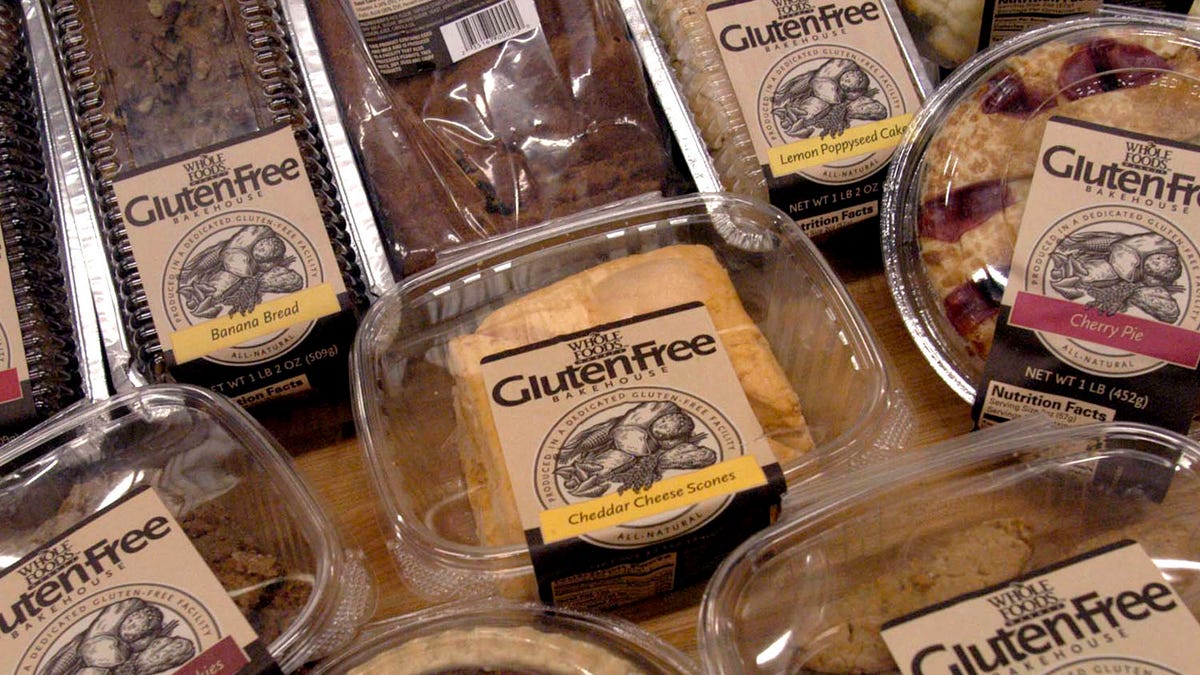
A sample of some of the 27 gluten-free products are displayed, in this Oct. 5, 2004 file photo, at the Whole Foods Market Gluten-Free Bakehouse in Morrisville, N.C. Each label reads "Produced in a Dedicated Gluten-Free Facility." Once banished to the dusty bottom shelves of obscure grocers, the gluten-free revolution is surfacing in the aisles of major supermarkets. (AP File Photo/Karen Tam)
As more and more people are being diagnosed with celiac disease and food allergies, the gluten-free foods industry is growing to meet these new dietary needs. A recent report from Packaged Facts estimated that the market for gluten-free products will be worth $4.2 billion in 2012.
Celiac disease sufferers are unable to process gluten – an ingredient found in wheat, barley and rye. When some with celiac disease inadvertently eats gluten, the lining of their small intestine becomes damaged, which can lead to abdominal pains, diarrhea and vomiting, just to name a few. Because of this allergy, people must buy food products that are gluten-free.
Some people suffer from gluten intolerance, which is different than celiac in that it is not an immune mediated response. The symptoms of gluten intolerance appear after eating wheat or other foods containing gluten, which can cause abdominal cramping, bloating, diarrhea and flatulence.
According to National Digestive Diseases Clearinghouse, more than 2 million people in the United States are affected by Celiac disease, or roughly, 1 in every 133 people.
It is important to check with your doctor before switching to a gluten-free diet.
The biggest category of gluten-free foods being sold are snacks and granola bars, comprising 15 percent of the market’s sales. From 2008 to 2012, the industry has seen an annual growth rate of 28 percent.
While the growth may be explained by the increase in diagnoses, awareness of celiac disease is also on the rise among patients, physicians and the public. Not only does the allergy affect more and more people, friends and family members have also been switching to the diet to support loved ones who cannot process gluten. The diet has also sometimes been hailed as an effective weight-loss strategy.
Packaged Facts estimates the gluten-free foods industry will be worth more than $6.6 billion in 2017.
